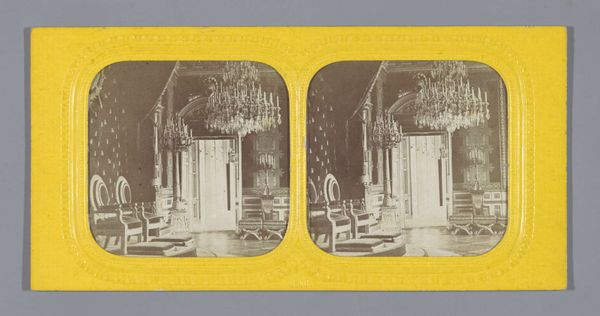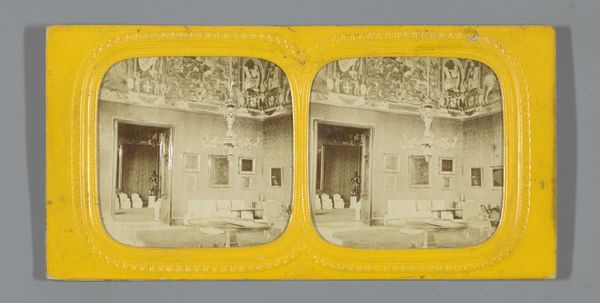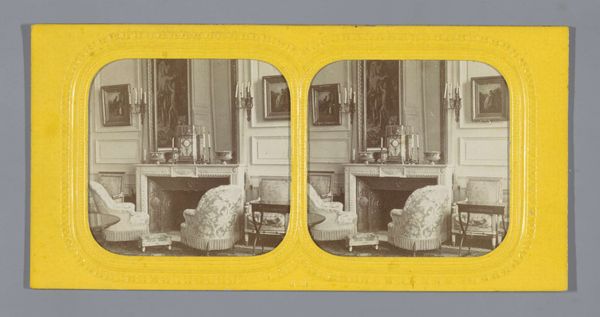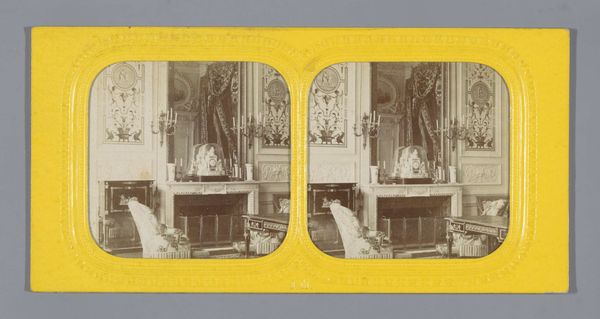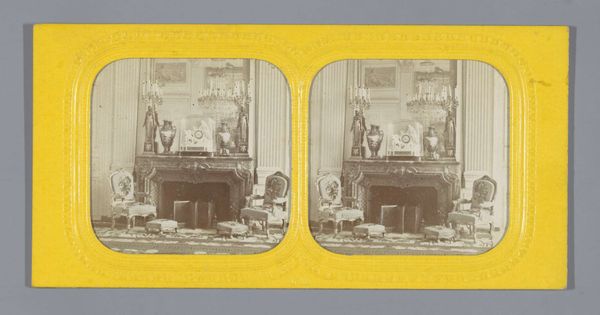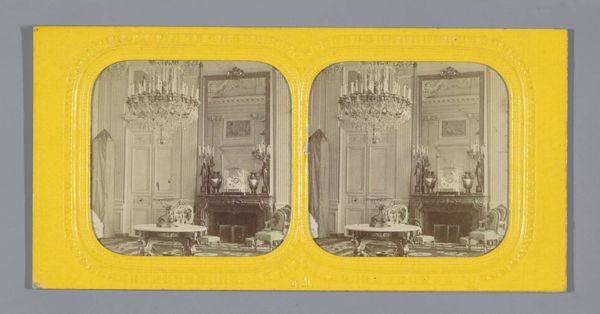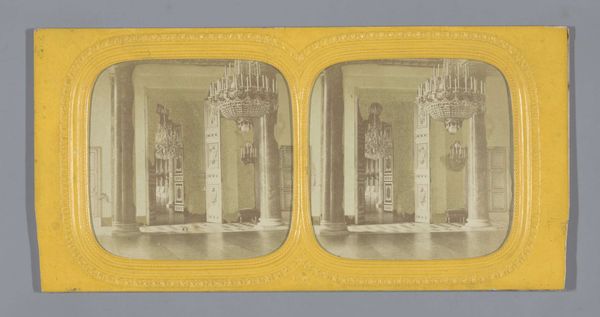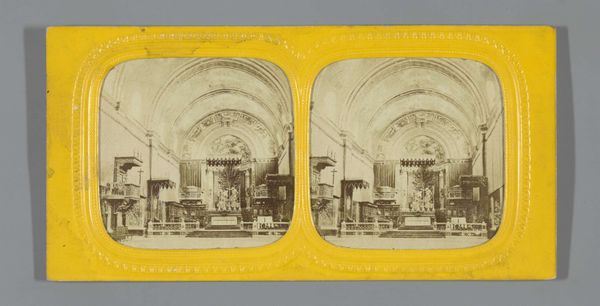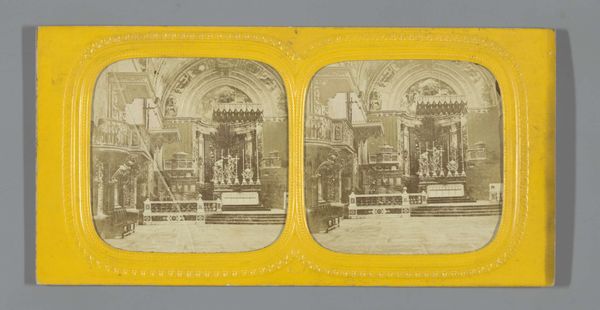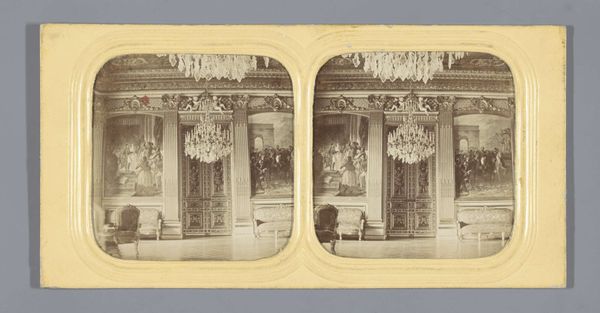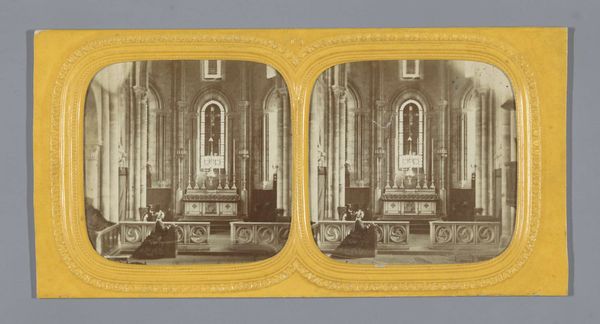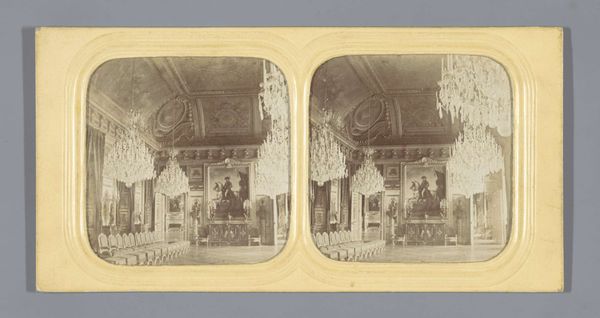
Interieur van de ontvangstsalon van het paleis in Compiègne, Frankrijk 1864 - 1879
0:00
0:00
photography
#
vase
#
photography
#
genre-painting
Dimensions: height 87 mm, width 176 mm
Copyright: Rijks Museum: Open Domain
Curator: This photograph, taken by Jules Marinier between 1864 and 1879, depicts the interior of a reception room in the Palace of Compiègne in France. It’s presented in a stereoscopic format, a popular medium at the time. Editor: My immediate reaction is one of intense, controlled opulence. The matching vases, the symmetrical arrangement of candlesticks, the perfectly aligned ottomans. It feels… curated in the extreme, and perhaps a bit stifling. Curator: The stereoscopic photography here is important. Its proliferation meant that even ordinary folks could obtain intimate views of these otherwise exclusive spaces and things, stimulating desire and also contributing to social hierarchies through imitation. Editor: Right, photography's role in democratizing access but also in reinforcing existing power structures. The image romanticizes and idealizes elite domesticity, reinforcing notions of luxury and status. The lack of any human presence almost heightens that sense, doesn't it? As if this is a stage set, waiting for its players. Where are the workers who would have cleaned this? Curator: Indeed, and one can consider that the vases and decorations, objects produced by specialized labor, became potent symbols of both wealth and taste available for mass consumption and emulation. Think about the porcelain and glass factories employing masses of laborers to replicate luxurious wares. The material value and social weight become interwoven here. Editor: Yes, we’re dealing with layers of social and economic relationships hidden within this seemingly still scene. Who had the time and money to engage with a viewing device, too? Who could then afford to try and mimic it in some way at home, at any scale? It is fascinating, actually, as an exercise in material, cultural aspirations. Curator: Precisely! This photo is more than a depiction of a beautiful room; it's evidence of complex networks of labor, production, and the circulation of status symbols during a period of great social and economic change. Editor: Ultimately, the photo leaves me thinking about who *isn't* in the room, whose labor made it possible, and how that unseen labor shaped the very structure of power reflected in the image.
Comments
No comments
Be the first to comment and join the conversation on the ultimate creative platform.
